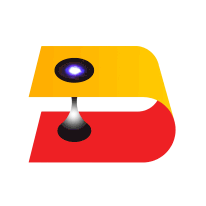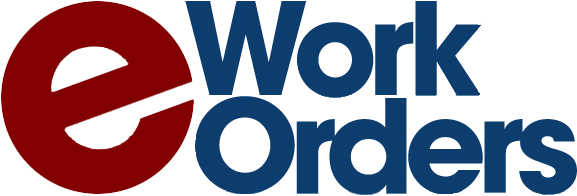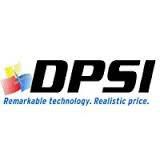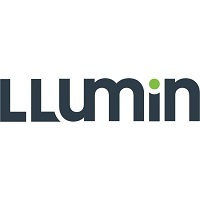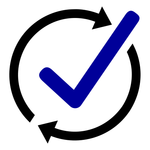What is Maintenance Management Software?
Maintenance Management Software is a strong tool that helps organizations streamline and optimize their maintenance procedures and activities. It has a variety of features and functionalities that help with the efficient management of maintenance tasks, assets, resources, and expenses. This software is necessary for industries such as manufacturing, transportation, healthcare, and facilities management, where regular maintenance is critical for corporate operations.
At its core, Maintenance Management Software is a centralized platform that allows maintenance managers to track and manage all maintenance tasks in one location. It enables users to build timetables, assign jobs, set priorities, and track progress, offering a comprehensive perspective of the maintenance operation. This aids in recognizing possible problems and correcting them before they worsen, minimizing downtime and expenses.
One of the primary benefits of Maintenance Management Software is its ability to promote preventive maintenance. Organizations can schedule periodic maintenance operations, such as inspections, servicing, and replacements, based on time or consumption to ensure that their assets are in top condition. This reduces unnecessary downtime and increases the longevity of equipment, resulting in significant long-term cost savings.
Furthermore, Maintenance Management Software provides insight into asset performance and maintenance history, enabling businesses to make data-driven decisions. It also allows for inventory management, including tracking spare parts and supplies, ensuring that personnel have the resources they need to complete maintenance duties quickly. Managers can use integrated reporting and analytics to acquire useful insights into maintenance costs, labor allocation, and equipment performance, which can help with budget planning and resource allocation.
When selecting a Maintenance Management Software, it is critical to consider scalability, ease of use, and connection with other systems. The software should also be mobile-friendly, allowing technicians to access work orders and change statuses on the go. Furthermore, cloud-based solutions provide the benefits of real-time updates and remote access, making them perfect for enterprises with dispersed teams or locations.
What Are the Recent Trends in Maintenance Management Software?
Maintenance management software is an essential tool for businesses of all sizes to effectively manage their maintenance operations. As technology advances, maintenance management software evolves to accommodate changing corporate needs.
We'll look at the latest developments in maintenance management software, giving you the knowledge you need to make an informed purchase decision.
1. Cloud-Based Solutions: Previously, maintenance management software was deployed on-premises, necessitating costly hardware and IT support. However, with the rise of cloud-based solutions, organizations can now access maintenance management software remotely, removing the need for complex gear and lowering IT expenditures. Cloud-based solutions provide flexibility and scalability, allowing organizations to simply modify and expand their maintenance procedures.
2. Mobile Accessibility: As more people utilize mobile devices, maintenance management software is becoming more accessible on smartphones and tablets. This enables maintenance staff to access vital information remotely, such as work orders and equipment data, thereby increasing production and efficiency. Mobile accessibility also allows for real-time updates and notifications, ensuring that maintenance activities are completed in a timely manner.
3. Data Analytics: The application of data analytics has transformed maintenance management, enabling firms to make data-driven decisions to optimize maintenance procedures. Maintenance management software now includes advanced analytics capabilities, which provide information on equipment performance, maintenance costs, and downtime. This data enables firms to enhance their maintenance plans and make informed decisions that decrease costs and improve efficiency.
4. Artificial Intelligence: The incorporation of artificial intelligence (AI) into maintenance management software has enabled the automation of a variety of functions, including preventative maintenance scheduling, equipment failure prediction, and maintenance report generation. This not only saves time and personnel expenses, but also assists organizations in avoiding unplanned downtime and costly repairs.
5. Integration With IoT: The Internet of Things (IoT) allows for real-time monitoring and tracking of equipment performance and health. By combining maintenance management software with IoT devices, businesses can automate maintenance procedures, receive real-time notifications for probable equipment breakdowns, and schedule maintenance work accordingly. This helps to minimize machine downtime and lower maintenance expenses.
Benefits of Using Maintenance Management Software
Maintenance management software, commonly known as a computerized maintenance management system (CMMS), is a sophisticated tool that helps firms streamline their maintenance processes. It is no longer practical for firms to manage maintenance activities using pen and paper or spreadsheets. In today's fast-paced, technology-driven world, manual procedures are not only time-consuming, but also prone to errors and inefficiencies. So what are the advantages of adopting maintenance management software?
Let us have a look.
1. Increased Efficiency And Productivity: Maintenance management software allows organizations to automate their maintenance activities, reducing the need for manual paperwork. This saves time and enables maintenance staff to focus on more important activities, resulting in enhanced production.
2. Improved Organization: CMMS enables firms to store all maintenance data in a single, centralized location, making it easier to track and access information. It also aids in work order organization, task scheduling, and inventory management, lowering the likelihood of equipment downtime and disruptions.
3. Cost Savings: Maintenance management software reduces equipment downtime and streamlines maintenance procedures, allowing firms to save money on repairs and replacements. It also aids in the optimization of maintenance schedules and the identification of possible equipment concerns before they become big problems, resulting in long-term savings for enterprises.
4. Improved Communication And Collaboration: Maintenance management software facilitates communication and collaboration among maintenance teams and other departments. It provides real-time updates and notifications, ensuring that everyone is on the same page and can collaborate effectively.
5. Improved Data Management And Analysis: CMMS enables firms to centralize all maintenance data and provide reports and analytics on a variety of topics such as work orders, equipment downtime, and maintenance expenditures. This data can assist uncover patterns and areas for improvement, resulting in better decision-making and cost management.
6. Increased Equipment Lifespan: By implementing regular maintenance plans and procedures, maintenance management software helps to increase the life of equipment. It guarantees that all assets are well-maintained, lowering the likelihood of breakdowns and replacements, and so saving organizations money.
Important Factors to Consider While Purchasing Maintenance Management Software?
When it comes to managing maintenance for your business, having the appropriate software in place may make a huge impact. However, with so many maintenance management software alternatives on the market, it can be difficult to decide which one would best meet your needs.
To help you make an informed decision, here are some key elements to consider when selecting maintenance management software.
1. Scalability: Scalability is one of the most important elements to consider when selecting maintenance management software. As your company grows, you may need to handle a greater volume of maintenance chores, so it's critical to select software that can keep up with your changing requirements. Look for software that provides several subscription levels or enables for updates to support future expansion.
2. User-Friendly Interface: Maintenance management software is designed to simplify, not complicate your procedures. As a result, it is critical to select software with a user-friendly interface that is simple to navigate and understand. This not only saves you time, but also ensures that your team can quickly adjust to utilizing the software without needing additional training.
3. Mobile Compatibility: In today's fast-paced company world, having mobile-friendly maintenance management software is essential. This allows you to access and manage maintenance activities while on the go, which improves efficiency and productivity. Before making a purchase, be sure the program includes a mobile app and is compatible with various types of devices.
4. Integration With Existing Systems: If your company already has systems in place, such as inventory management or asset tracking software, it's critical to select maintenance management software that easily integrates with them. This will save you time and effort in the long run because all of your systems will integrate effortlessly.
5. Customization Options: Each organization is unique, as are its maintenance management requirements. As a result, it's critical to choose software that allows for customization to meet your specific business needs. The ability to customize the program, from creating new fields to adding your corporate logo, makes it more unique and successful for your business.
6. Data Security: Given the growing threat of cyberattacks, data security should be a key priority when selecting software for your firm. Maintenance management software will save sensitive information such as maintenance schedules, asset details, and financial data. As a result, it's critical to select software that includes strong security features like encryption and regular backups.
7. Customer Support: Technical issues and questions may emerge with any software. That's why it's critical to select a vendor who provides dependable customer service. Look for software that provides many contact options, such as phone, email, and live chat, as well as a dedicated support crew that is there to help you whenever you need it.
What are the key features to look for in Maintenance Management Software?
When searching for the ideal Maintenance Management Software, it is critical to evaluate the major characteristics that will make it a useful and efficient tool for your company.
Here are some important factors to consider when searching for the finest Maintenance Management Software:
1. Work Order Management: This tool lets you create, assign, and track work orders for any maintenance operation. It should also allow users to set deadlines, prioritize jobs, and receive notifications when work orders are fulfilled.
2. Asset Management: The program should include a comprehensive asset management system that lets you track and monitor all of your equipment, machinery, and buildings. This includes reviewing the maintenance history, identifying essential assets, and scheduling preventive maintenance.
3. Inventory Management: The capacity to monitor and track spare part and supply inventories is critical for effective maintenance operations. Look for software that lets you set reorder points, measure consumption, and generate purchase orders.
4. Resource Planning: A good maintenance management software should include a function that allows you to plan and distribute resources such as technicians, supplies, and equipment for maintenance jobs. This guarantees that you have the necessary resources available as needed.
5. Mobile Accessibility: With the advent of mobile technology, having software that is accessible and usable on mobile devices is critical for on-the-go maintenance management. This enables technicians to receive and reply to work orders, track time, and update job status in real time.
6. Reporting And Analytics: The program should provide extensive reporting features that offer information about maintenance performance, costs, and equipment downtime. This enables you to make data-driven decisions that promote continual improvement.
7. Integration: Select software that interacts with other systems, such as ERP or CMMS, to facilitate smooth data transmission and eliminate repeated entries. This also provides a more comprehensive view of your business.
8. User-Friendly Interface: A user-friendly interface helps your staff understand and use the software more efficiently, resulting in increased adoption rates and better results.
9. Customization: Each organization has distinct maintenance requirements. A configurable program enables you to adjust the system to your individual needs, resulting in a more tailored and efficient solution for your organization.
10. Customer Support: Finally, think about the degree of customer support and training provided by the software vendor. Having a dependable support system in place guarantees that any technical issues are resolved quickly and that your team has the essential abilities to operate the product efficiently. By taking these essential qualities into account, you can select a Maintenance Management Software that fulfills your company's requirements while also streamlining and optimizing maintenance processes.
Why Do Businesses Need Maintenance Management Software?
Businesses require maintenance management software to optimize their maintenance operations, lowering costs, increasing efficiency, and reducing downtime. This program provides a consolidated platform for managing all maintenance chores, including scheduling and tracking work orders, inventory management, and equipment maintenance.
Maintenance management software allows organizations to create and allocate work orders to personnel, track their progress, and assure timely completion. This not only reduces delays and breakdowns, but also boosts overall productivity and customer happiness. The software also enables organizations to keep precise records of equipment maintenance histories, expenses, and warranty information.
This data is critical for making sound judgments about maintenance techniques, replacement plans, and budget allocation. Maintenance management software also has a number of capabilities, including preventative maintenance scheduling, asset tracking, and inventory management. These characteristics enable firms to proactively identify and address possible concerns before they become serious problems.
This not only lowers maintenance expenses but also extends the life of equipment. Furthermore, computerized inventory management enables firms to maintain ideal stock levels of vital maintenance supplies and replacement parts, lowering the chance of downtime due to a lack of resources. Furthermore, maintenance management software offers real-time visibility and data, enabling firms to monitor their maintenance operations and discover areas for improvement.
This data-driven strategy helps firms to make data-driven decisions while increasing overall maintenance efficiency. Furthermore, cloud-based maintenance management software enables remote access and collaboration, allowing firms to manage maintenance operations from anywhere and at any time. This is especially useful for businesses with different locations or remote teams.
How Much Time Is Required to Implement Maintenance Management Software?
The time required to install maintenance management software varies based on numerous aspects, including the organization's size, operational complexity, and the software system chosen. On average, a full implementation of maintenance management software might take between a few weeks and a few months. The first step in installing maintenance management software is to evaluate current maintenance processes and find opportunities for improvement.
This could include conducting interviews with key stakeholders, reviewing data, and drawing out workflows. This initial stage can last 1-2 weeks, depending on the size of the company and the complexity of the project. After the assessment, the next stage is to configure the program to fit the organization's specific requirements. This may include developing task order templates, asset hierarchies, and defining user rights.
Depending on the intricacy of the organization's operations, this step could last 2-4 weeks. Data migration is the following step after configuration is completed. This entails moving existing data from spreadsheets or other systems to the new program. The time necessary for data migration varies based on the volume and complexity of data, but it usually takes 2-4 weeks.
Once the data has been migrated, the software must be evaluated to confirm that it is functional and meets the organization's requirements. This testing phase can last 1-2 weeks. Finally, following configuration and testing, the product is ready to be deployed to all users. This may include conducting employee training sessions and offering assistance during the transition phase.
The time required for this stage varies depending on the size of the organization and the number of users, but it usually takes 2-4 weeks. A full setup of maintenance management software can take between 8 and 14 weeks. However, it is crucial to remember that this is a rough estimate that may vary depending on the organization's specific needs and the software solution selected.
What Is The Level Of Customization Available In Maintenance Management Software?
When looking for the best maintenance management software, you should evaluate the level of customization offered. This refers to the capacity to customize the software to your individual requirements and tastes. Different software solutions provide varying levels of customisation, therefore it is critical to understand the extent given by each before making a decision. Some maintenance management software may come pre-configured with a set of functions and modules, allowing for minimal customization. These types of software are frequently created to address certain sectors or types of maintenance activities. While they may be appropriate for some organizations, they may not provide adequate flexibility for others. On the other hand, some maintenance management software supports advanced customization. These systems frequently include a number of features and modules that may be combined and modified to create a unique and bespoke system. This level of customization is perfect for enterprises with complicated maintenance requirements or those seeking a fully personalized software solution.
When selecting maintenance management software, consider the following essential areas of customization:
1. User Interface: The flexibility to change the user interface will help your team understand and use the product more effectively. This may include customized dashboards, layouts, and menus.
2. Workflow Automation: With this capability, users may construct custom workflows and automate operations based on predefined triggers and actions. It can significantly increase efficiency and streamline processes.
3. Reporting And Analytics: The flexibility to customize reports and dashboards can provide useful insights into maintenance performance and aid in decision-making.
4. Integrations: By integrating with other applications or systems, you can increase data exchange and expedite procedures across departments. To establish the extent of customisation required in maintenance management software, you must first thoroughly assess your company's demands and processes.
Consider talking with various software suppliers to better understand the customization choices they give and how they correspond with your company's goals. With the appropriate level of customization, you can ensure that your maintenance management software suits your individual needs and helps you reach your maintenance objectives.
Which Industries Can Benefit The Most From Maintenance Management Software?
Maintenance management software is a strong tool for automating and streamlining maintenance activities, increasing the overall efficiency and effectiveness of maintenance operations. It is essential for industries that want to extend the life of their assets while lowering operating expenses.
The following sectors can considerably benefit from deploying maintenance management software:
1. Manufacturing: Downtime caused by equipment failures in the manufacturing business can result in severe financial losses. Manufacturers can use maintenance management software to track and manage their production equipment's maintenance schedules, ensuring that it operates at peak efficiency and has little unscheduled downtime.
2. Healthcare: In the fast-paced and vital environment of the healthcare business, maintenance management software is critical for keeping medical equipment and facilities in excellent operating order. By automating maintenance procedures and tracking equipment usage, healthcare providers can assure their patients' safety and well-being while reducing downtime.
3. Transportation: Whether it's planes, trains, trucks, or ships, dependable and well-maintained vehicles are critical to the transportation industry. Maintenance management software can assist transportation businesses in scheduling and tracking preventative maintenance to ensure that their fleets run smoothly. It also enables them to spot possible concerns before they become costly problems.
4. Facilities Management: Proper facility maintenance, such as in offices, schools, and retail malls, is critical to tenant safety and comfort. Maintenance management software enables facility managers to schedule and track maintenance work for everything from HVAC systems to elevators, ensuring that they run smoothly and safely.
5. Oil And Gas: The oil and gas business relies substantially on complicated machinery and equipment, making maintenance a crucial component of their operations. Maintenance management software helps oil and gas businesses monitor equipment performance, schedule maintenance, and manage spare parts inventory.
6. Government And Municipalities: Cities and municipalities are responsible for preserving a wide range of assets, including roads, bridges, parks, and public buildings. Implementing maintenance management software allows government bodies to efficiently manage asset maintenance, prioritize activities, and allocate resources.
Conclusion
In today's fast-paced corporate world, managing maintenance operations efficiently and effectively is critical to preserving a competitive advantage. This is where the Maintenance Management Software (MMS) comes in. MMS, with its capacity to streamline and automate maintenance processes, has become a crucial tool for any firm trying to optimize its maintenance operations.
Throughout this buyer's guide, we've covered the key features and variables to consider while selecting an MMS. From key functionality like work order management and preventative maintenance to advanced capabilities like asset tracking and analytics, we've covered the critical components of a strong MMS. When deciding which MMS to invest in, it is critical to evaluate your organization's specific demands and requirements.
Whether you are a small firm with little resources or a major enterprise with a complicated maintenance operation, there is an MMS available to match your specific requirements. Furthermore, it is critical to properly assess the software's usability, scalability, and compatibility with your current systems. A user-friendly interface and the flexibility to scale as your company grows are critical considerations that can influence the long-term success of your MMS deployment.
Furthermore, the vendor's reputation and client feedback are critical variables to examine. A reliable provider with a track record of successful MMS installations can provide you with peace of mind and ensure that the software is implemented smoothly. To summarize, investing in an MMS is a strategic move that can significantly increase the efficiency and productivity of your maintenance operations.
By carefully analyzing the software's features, scalability, and compatibility, as well as the vendor's reputation, you can discover the appropriate MMS to fit your organization's specific demands and position you for long-term success. So don't wait any longer; select the best MMS for your company immediately and gain the benefits of improved maintenance management.


